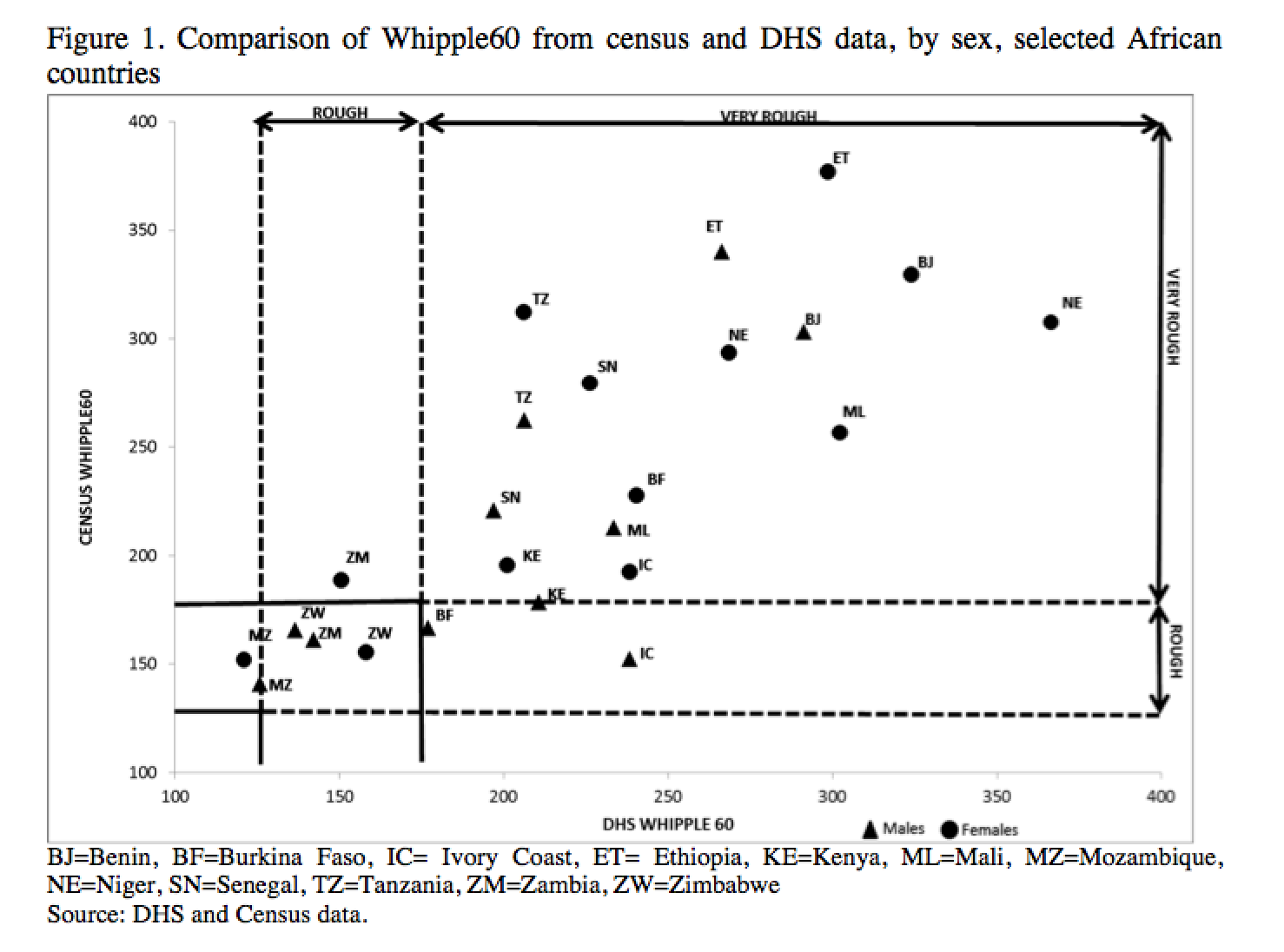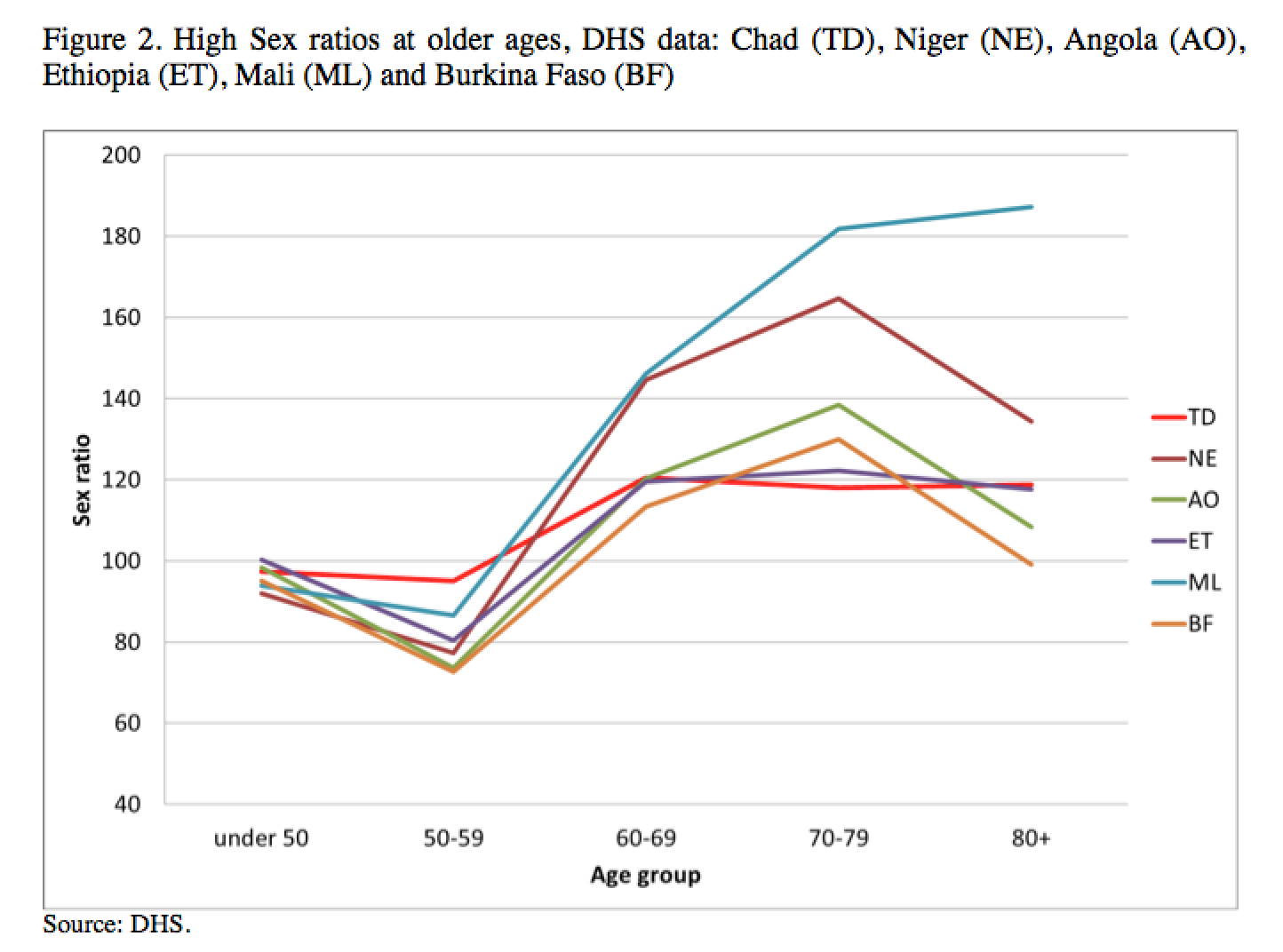Why do we need better data on older people?
To accurately understand population change – its scale, speed, determinants and variants – we need accurate data on the age of a population’s members. In low-income countries, whilst levels of knowledge of age or date of birth are increasing, there remain substantial problems of age reporting and recording for older people and for those who are unschooled. These problems are particularly acute in sub-Saharan Africa, where, until recently, low levels of education and vital registration have been combined with a widespread social irrelevance of knowing absolute age, although relative age has always been important in terms of social relationships, behaviour and respect. For example the initiation of age-sets in many East African populations is part of an attribution of social, economic and political roles and many West African kinship terminologies implicitly refer to relative age (older brother, younger brother).
The impact of the lifecourse on patterns of physical aging and mental health and competence in old age is unclear for African populations. It seems likely that past disease stresses, high fertility and nutritional problems in childhood lead to more rapid deterioration, but these could just be strong selective forces. These cannot be assessed without reliable age data. There is considerable concern that old age poverty will become a growing problem for developing countries, including increasing stresses that younger adults face in caring for older parents whilst themselves confronting unemployment and demands from their own children. Other difficult policy issues relate to the provision of health and social care to populations with increasing absolute numbers of older people, even when the proportion of the older population remains stable.
Questions about the quality of data for older people
Are data inaccurate because many older Africans do not know their ages? Are there gender differences in age data quality? Is there any evidence that different methodological approaches (survey vs. census) generate different patterns of age and other errors for older people? A key issue is whether data are accurate enough to provide meaningful denominators for rates. Age reporting from censuses and surveys will also indicate whether ages provided by other sources (e.g., administrative or hospital data) are good enough to provide meaningful numerators.
We analysed age data quality of nationally representative datasets (census, DHS) for a range of sub-Saharan African countries. Sample surveys are often assumed to generate better quality data than a census because more time can be spent on interviewer training and data quality control. We compare the quality of age data reporting for older (over 60) and younger people in census and DHS data using standard demographic techniques (Whipple’s index and a modified Whipple’s index for older people). The index provides a measure of the general reliability of the age distribution, ranging from “Highly accurate” to “Very rough”. We observe that:
- In most countries except those in Southern Africa, DHS data for the younger adult population are ‘rough data’. For 5 countries (Mali, Burkina Faso and Niger, Benin and Ethiopia) they are ‘very rough’.]
- Age reporting for older adults is substantially worse than that for younger adults, with the exception of Mozambique.
- The age reporting is worse for older women than for older men, with the exceptions of Southern African countries, Kenya, Tanzania, and Ivory Coast.
- DHS data are more accurate than the census (see Figure 1) for the Southern African countries and Ethiopia, but censuses have better age reporting than DHS in the Sahelian countries (Mali, Burkina Faso, and Niger)

Getting better data on older Africans
It is clear from our analysis that different field methodological approaches generate contradictory data on older Africans: furthermore different methods appear to work better in different countries. With the exception of Southern Africa, it is impossible to assess accurately the basic demographic structure of the older population. Other analyses (Figure 2) looking at the sex ratios of 10 year age groups (thus smoothing out some of the age misreporting) show that the DHS seems to under-enumerate older women in Sahelian countries compared to men, and compared to the census.

This suggests that the survey methodology itself may contribute to the omission of older women, interacting with local cultural values and living arrangements, although we must remember that DHS surveys are largely focused around reproductive-age women, so there is little pressure on interviewers to assiduously pursue potential omitted older people. These statistically invisible older women are probably among the most vulnerable and the poorest in society. Their exclusion from the data will contribute to reinforcing the stereotype, encountered frequently in our qualitative research in Burkina Faso with statisticians, academics and NGO workers, that most older Sahelians are cared for by their children and are usually co-residential with them, because such situations are those that are best captured by the data that are collected.
Understanding lifecourse trajectories to old age and developing appropriate and equitable policies for older people in Africa require accurate and reliable data. It is seems clear that, outside Southern Africa, existing data cannot even accurately assess older African population structures, let alone provide the detailed information needed to advise policy decision-making. In many Sub-Saharan countries’ national statistics the population of older Africans remains miscounted, badly represented, and at times invisible. The most vulnerable elderly people are probably totally statistically invisible, since the stereotypes around the situation of the elderly that permeate all stages of the data collection process mean that they are likely to be omitted altogether, at least in the Sahelian countries. Clearly such stereotypes must be challenged. Moreover, the reality that poor, old people (particularly widows) live alone and without the support of their families must be recognised. In order to do this, better data are needed. As a first step, improving the focus of census and survey questions and developing ways to overcome barriers to accurate data collection would lead to better data for informing policy directions which respond to the specific, yet largely unknown, needs of older Africans.
Reference
Randall Sara and Coast Ernestina (2016) The quality of demographic data on older Africans. Demographic Research, 34, pp. 143-174.
Demographic-research.org-volumes


